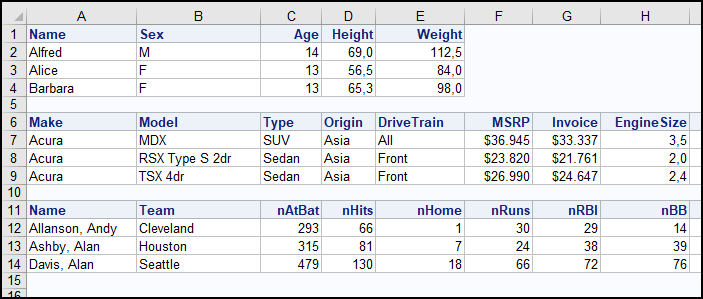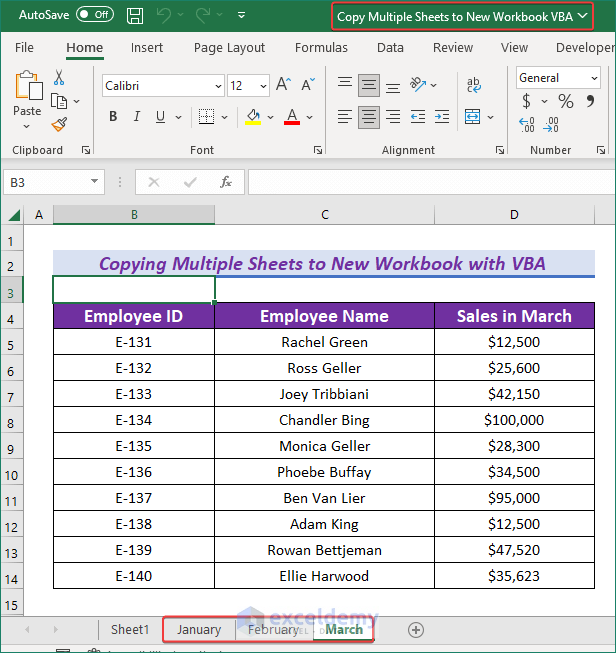Mastering Excel: Reading Multiple Sheets in SAS

Mastering Excel is an indispensable skill in today's data-driven world. Whether you're an analyst, a data scientist, or someone managing a team, Excel's ability to organize, manipulate, and analyze data is unmatched. One common task in Excel that many users face is handling data that spans multiple worksheets. For professionals working with SAS (Statistical Analysis System), efficiently reading data from multiple Excel sheets into SAS can significantly streamline data analysis processes. This blog post will guide you through the process of reading multiple sheets from an Excel file into SAS, providing detailed steps, tips, and best practices.
Why Use SAS for Excel Data?

Before diving into the how-to, let’s briefly understand why SAS might be preferred over other methods for working with Excel data:
- Data Integrity - SAS ensures data integrity by offering robust data validation and error handling.
- Scalability - It can manage large datasets, which is often necessary when dealing with multiple sheets.
- Advanced Analysis - SAS provides advanced statistical procedures that can be directly applied to imported data.
Step-by-Step Guide to Reading Multiple Excel Sheets in SAS

1. Preparing Your Excel File

- Ensure all sheets have a consistent structure for easier data import.
- Name your sheets meaningfully to reference them easily in SAS.
2. Setting Up SAS Environment

Before you start importing data, make sure your SAS environment is configured to handle Excel files. Here’s what you need:
- SAS/ACCESS - If you don’t have this module installed, check with your IT department or SAS administrator.
- DBMS=CAS - If using SAS Viya, you might need to use CAS for processing.
3. Importing Data from Multiple Sheets

LIBNAME myexcel EXCEL ‘C:\Path\To\Your\File.xlsx’;
DATA combined; SET myexcel.‘Sheet1'n myexcel.'Sheet2‘n myexcel.‘Sheet3$‘n ; RUN;
💡 Note: Replace 'Sheet1', 'Sheet2', 'Sheet3', etc., with your actual sheet names. The $ symbol tells SAS that these are SAS data sets.
4. Handling Different Sheets with Different Structures

Sometimes, sheets might not have the same structure. Here’s how you can handle them:
DATA sheet1; SET myexcel.‘Sheet1$‘n; RUN;DATA sheet2; SET myexcel.‘Sheet2$‘n; *Perform any necessary transformations here; RUN;
DATA combined; SET sheet1 sheet2; RUN;
5. Advanced Techniques

Using PROC IMPORT for Dynamic Imports
If you’re unsure about the number or names of sheets, you can use PROC IMPORT to dynamically import data:
FILENAME inputFile ‘C:\Path\To\Your\File.xlsx’;
PROC IMPORT OUT=WORK.ImportedData
DATAFILE=inputFile
DBMS=EXCEL
REPLACE;
SHEET=‘Sheet*’;
RUN;
Reading All Sheets Using a Macro
Here’s a macro that reads all sheets and combines them into a single dataset:
%macro readAllSheets(file, outfile); %let fid = %sysfunc(fopen(&file)); %if &fid > 0 %then %do; %let numSheets = %sysfunc(attrn(&fid, NMEBRS)); DATA &outfile; %do i = 1 %to &numSheets; %let sheetName = %sysfunc(attrn(&fid, ‘MEMBERNAME’, &i)); SET myexcel.“&sheetName”n; %end; RUN; %let rc = %sysfunc(fclose(&fid)); %end; %mend readAllSheets;
%readAllSheets(‘C:\Path\To\Your\File.xlsx’, CombinedData);
This comprehensive approach allows you to automatically process any Excel file, regardless of its structure or number of sheets.
Optimization and Best Practices

- Use PROC SQL - For operations on multiple sheets, PROC SQL can be more efficient, especially with join operations or data aggregation.
- Consider Performance - If dealing with large files or many sheets, consider the performance implications. Using PROC IMPORT with “SHEET=‘*’” might not be the best approach for massive data sets due to its overhead.
- Data Cleaning - After importing, consider a data cleaning step to standardize formats, handle missing values, or remove duplicates.
- Use SAS Data Steps for Complex Transformations - If sheets require different transformations, handle them in separate DATA steps before combining.
In summary, this post covered the essentials of reading multiple sheets from Excel into SAS, starting with preparation and setup, through basic and advanced import techniques, to optimization strategies. By mastering these skills, you can enhance your workflow, allowing for more sophisticated analysis directly within SAS, reducing manual data manipulation, and speeding up the data preparation process. Remember, the key to efficient data management in SAS is understanding how to leverage SAS's capabilities while ensuring data integrity and maintaining performance.
Can I read sheets from an Excel file without knowing their names in advance?

+
Yes, you can use PROC IMPORT with the SHEET=”” option to dynamically import data from all sheets in an Excel file, even if you don’t know the names beforehand.
How can I handle sheets with different structures or data formats?

+
You can import each sheet into separate SAS datasets and then use DATA steps to apply the necessary transformations to align the data structures before combining them into one dataset.
What are some performance considerations when reading large Excel files with multiple sheets?

+
For large files, consider using PROC SQL for data manipulation to improve performance. Also, import sheets individually rather than using SHEET=”” to minimize memory usage and speed up the process.